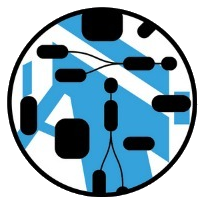The CrewAI model can be used as a reference guide complementary to the official documentation1. Hover the mouse over the diagram elements above for short descriptions (tooltips), click to navigate to element pages with more details. The above diagram is conceptual - it shows only the most important classes and relationships. The generated UML class diagram provides more details. Hover the mouse over diagram elements for tooltips, click to navigate to class/feature pages.
You can also use the default graph and other graphs to quickly grasp relationships of the model elements. Hover the mouse over graph nodes for tooltips and to highlight their reated classes. Drag to rearrange, double-click to navigate to class pages.
It can also be used as a starting point for an organization-specific documentation - make a copy or fork, modify descriptions of model elements. For example, add links to catalogs of internal knowledge sources or approved/available LLMs and their configurations. Similarly, you may have a catalog of reusable agents or guardrails. You may also have organization-specific development guidelines with references to shared libraries and internal productivity tools such as code generators, wizards, IDE plugins, training resources, …
You can also create a custom model by extending classes in this model and add classes and features specific to your organization. For example, catalogs, ownership and reponsibilities, alignment to organizational structure, development efforts, etc.
However, the main objective of the model is to serve as an intermediary for code and documentation generation. The model can be populated from diagrams and other data sources. Then it produces a python model and, finally, Python sources and supporting artifacts.
The model can be created from Drawio diagrams using exeutable diagrams or semantic mapping.
You can find an example of programmatic population of a model here. The below code snippet shows how to generate a python source file and configuration files using CrewGenerator:
CapabilityLoader capabilityLoader = new CapabilityLoader();
ProgressMonitor progressMonitor = new PrintStreamProgressMonitor();
Requirement<ResourceSetRequirement, ResourceSet> requirement = ServiceCapabilityFactory.createRequirement(ResourceSet.class);
ResourceSet resourceSet = capabilityLoader.loadOne(requirement, progressMonitor);
File crewSourceFile = new File("target/latest-ai-developments/src/crew.py").getCanonicalFile();
URI crewSourceURI = URI.createFileURI(crewSourceFile.getAbsolutePath());
CrewGenerator crewGenerator = new CrewGenerator();
crewGenerator.generate(
createCrew(),
crewSourceURI,
resourceSet,
progressMonitor);
You can override CrewGenerator methods to customize the generation process.
-
Documentation in this model is copied verbatim or almost verbatim from the reference documentation for the purpose of consistency.
↩
 Nasdanika Models
Nasdanika Models CrewAI Model
CrewAI Model